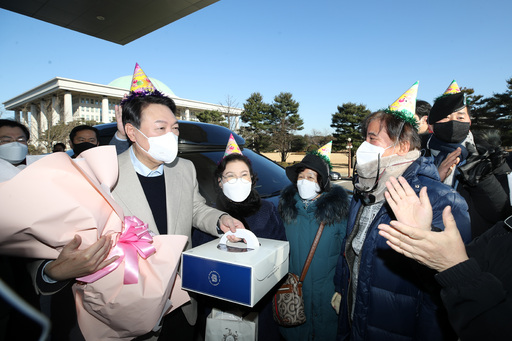Telehealth and remote patient monitoring have proven themselves to be not only convenient but necessary tools for patient care during the COVID-19 pandemic.
URAC is an independent, nonprofit accreditation organization – and one of the most influential telehealth accreditors in the world. Dr. Shawn P. Griffin is the first physician to serve as president and CEO of URAC.
During his March HIMSS22 educational session, “The Future of Digital Health: Ensuring Access to Care,” Griffin will highlight technologies he has seen that demonstrate how traditional healthcare organizations and disruptors are using these platforms to improve issues including access to care, mental and behavioral health support, and systems focused on wellness.
He also will review the challenges in policy, payment and perceptions that are affecting the market and delivery of these technologies. And he will share strategies for extending these digital platforms in areas – both urban and rural – with limited broadband internet access.
Healthcare IT News interviewed Griffin to take a closer look at what he will be presenting at the HIMSS22 conference.
Q. Please describe some of the emerging technology models in telemedicine and remote patient monitoring, and how they can help improve access to care for underserved populations.
A. In conversations about who has access to care and who is underserved, it’s important to recognize there are two different types of underserved populations: those underserved by lack of proximity to care and those underserved by economics or social determinants. Advances in telehealth have allowed both populations to receive more convenient, high-quality care, thus leading to better health outcomes.
Rural areas are often faced with two specific and significant challenges: access to providers and reliable internet access. Advances in telehealth technology allow specialists and primary care providers to work together to treat patients even when the specialist is several hours away.
Providers can work together to provide care for both urgent situations, such as a heart attack or stroke, or for treating patients with chronic conditions, such as kidney disease, high blood pressure or diabetes. When needed, a primary care physician can host a specialist via a video conference from their own office for patients to “see” the specialist.
Telehealth visits can happen in provider practices and in schools and houses of worship where there is broadband internet access and private spaces for patients to meet with a provider from a distance.
These advances are not only taking place in the United States. Ain Shams University Virtual Hospital (ASUVH) in Cairo, Egypt, employs a model of care where they reach patients throughout the continent by connecting with local clinics. ASUVH serves as a technology hub and works with care providers in remote areas to provide guidance and treatment for patients in rural Africa where clinics are few and specialized care is non-existent.
Advances in telehealth are also helping patients in urban areas with underserved populations. When a patient can do a video visit with a provider, they no longer need to take two buses and half a day off from work to see a provider, thus reducing the transportation and economic stresses of a visit.
In addition, telehealth allows families to receive the care they need at the appropriate time and place. A telehealth visit means that a caregiver may not need to take an infant with a fever to the emergency room at 2 a.m., but rather, the situation can be triaged without even leaving home. While the telehealth encounter may still result in an overnight ER visit, the chances of it doing so are lessened.
Telehealth also allows for improved multigenerational care. An elderly patient living in Florida can have her child or grandchild in Minnesota be a part of her care team through participating in telehealth visits. This improves coordination of care and benefits both the patient, her family and the provider through directly sharing the information all parties need to make important decisions.
Q. What do some of the approaches gaining acceptance in the fields of behavioral and mental health with regard to telehealth look like?
A. Mental illness affects one in five adults and one in six adolescents each year. The pandemic has only exacerbated the number of individuals who need mental healthcare and made it even more difficult to have in-person access to those services. But telehealth, or tele-mental health, can help address these shortcomings.
The future of tele-mental health requires rethinking requirements for providing care and payment parity. Requiring an in-person visit prior to accessing further mental health services through telehealth is an arbitrary restriction with no clinical evidence to support the notion.
The requirement worsens clinician shortages and further exacerbates health inequities by restricting access for those individuals with barriers preventing them from traveling to in-person care, such as those patients in rural areas for whom transportation is an issue or who have physical disabilities limiting their abilities to leave their homes.
Allowing patients with mental health disorders to see a provider without leaving their homes or workplaces can make a significant difference in how mental health disorders are treated in the United States going forward.
Along parallel lines, telehealth combined with medication-assisted treatment (MAT) – the clinically accepted best practice for addressing substance-use diagnoses – is a valuable and proven modality. Continued exception to the Ryan Haight Act is key to allow providers to prescribe MAT without first conducting an in-person examination through using telemedicine technologies, which requires the use of an audiovisual, real-time, two-way interactive communication system.
In underserved populations, where many counties don’t have any mental health providers, let alone enough providers, the ability to offer MAT via telehealth as one form of treatment for SUD [substance use disorders] without an in-person visit saves lives – especially as the opioid epidemic rages alongside the pandemic.
Q. How do things look at the national and state levels for supporting expansion of telemedicine and remote patient monitoring during and following the pandemic?
A. Even as telehealth has seen exponential growth during the pandemic, there are policy questions that remain, at both the state and federal level. The evergreen concern about virtual care is that of fraud, waste and abuse and how to balance it with the demonstrated value of extended medical services to patients who are either geographically or economically underserved.
While there is certainly the possibility of fraud, waste and abuse in virtual care, it can be found in in-person healthcare as well, and as such, it’s important not to conflate fraud, waste and abuse with telehealth and other innovations in digital health. Further, telehealth providers can help reduce the chance for fraud, waste and abuse by implementing risk-management policies and mechanisms.
Other outstanding issues related to post-pandemic telehealth services include originating site questions, regulations on what types of devices and modalities can be used, which specialty encounters such as physical therapy can be conducted via telehealth, as well as state licensing requirements.
While each of the changes to loosen requirements has allowed telehealth to serve the needs of the public health emergency, there remain many questions about what the right balance will be going forward. As long as these issues are unsettled, providers will remain hesitant toward investing time, training and financial resources in permanent changes to expand telehealth services.
It’s imperative that policymakers, CMS, state Medicaid programs and commercial insurers use the ever-increasing set of data to estimate the effect of telehealth on access, costs and quality. Accreditation and certification of telehealth and digital health programs is one means of ensuring quality exists in security, safety and patient care, which may be just what we need to promote the case for payment parity of telehealth visits.
As both states and the federal government revisit long-term telehealth policy, policymakers should consider how telehealth affects access, cost and quality of care.
Dr. Griffin will present his HIMSS22 session, “The Future of Digital Health: Ensuring Access to Care,” on March 15 from noon to 1 p.m. at the Orange County Convention Center in room W206A.
Twitter: @SiwickiHealthIT
Email the writer: bsiwicki@himss.org
Healthcare IT News is a HIMSS Media publication.
Note: This article have been indexed to our site. We do not claim legitimacy, ownership or copyright of any of the content above. To see the article at original source Click Here








